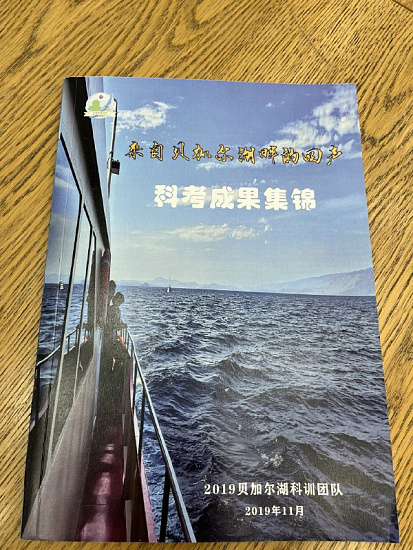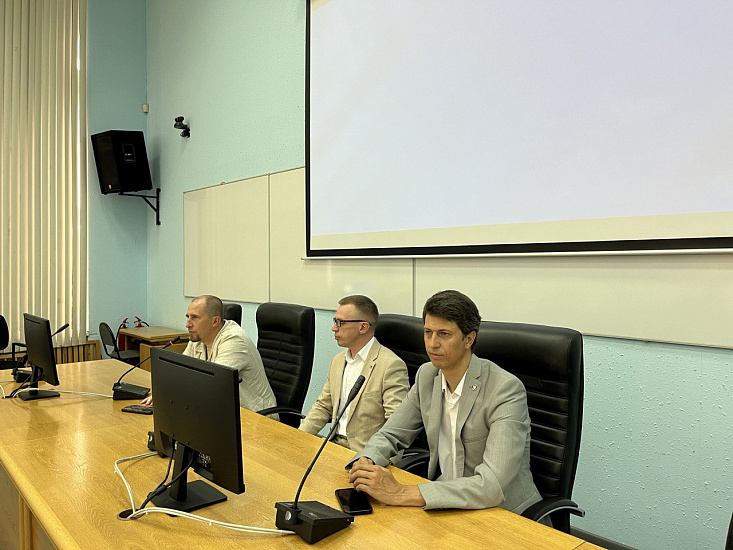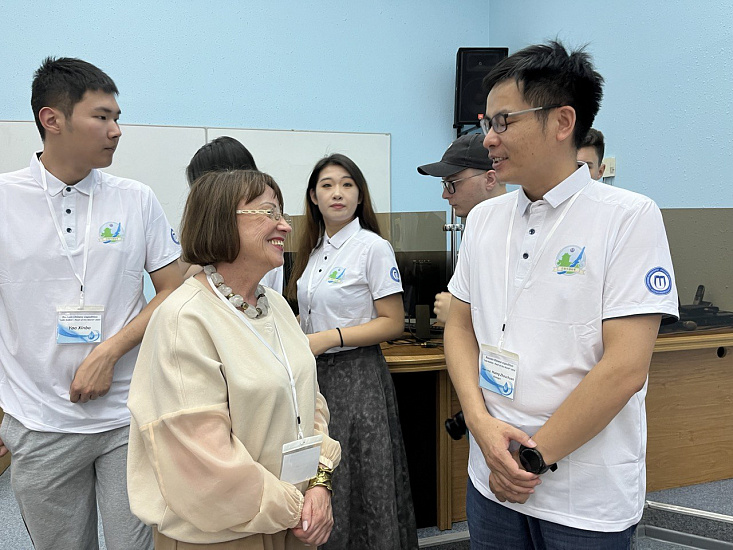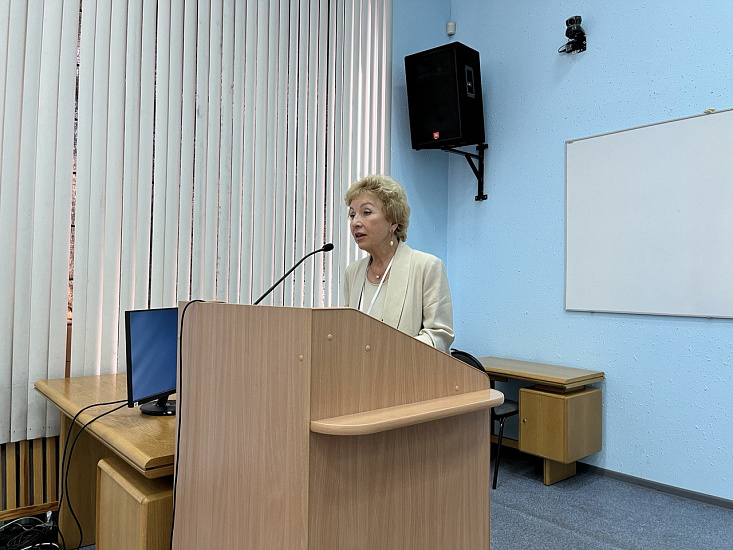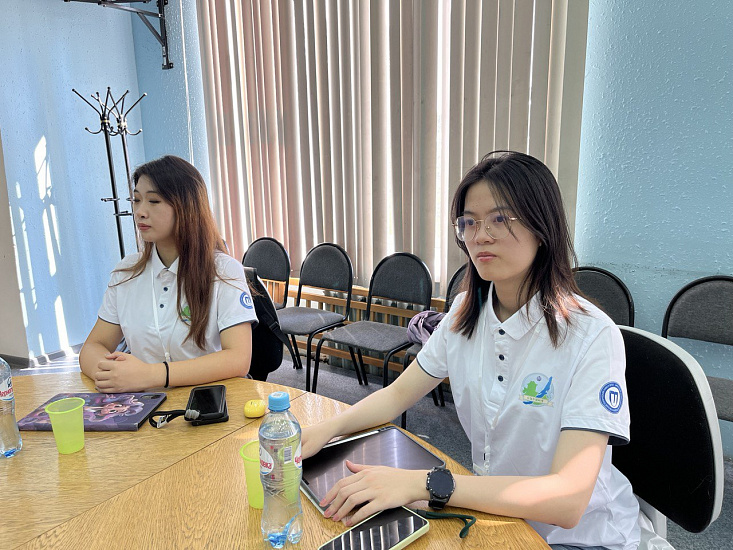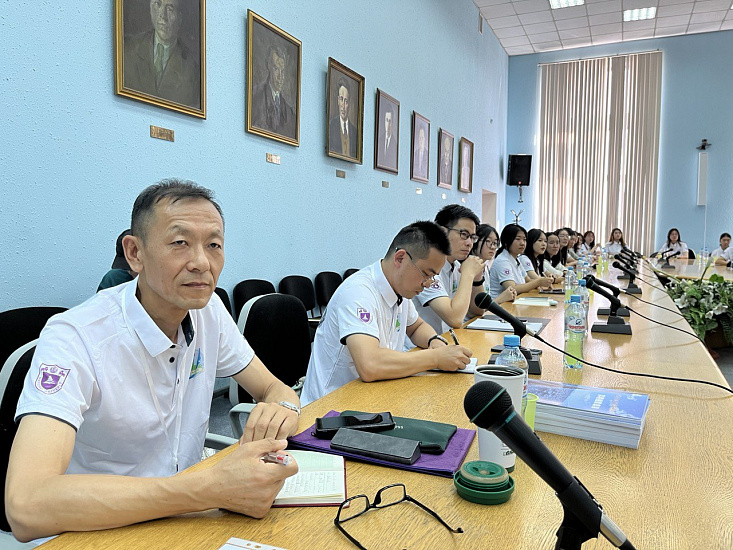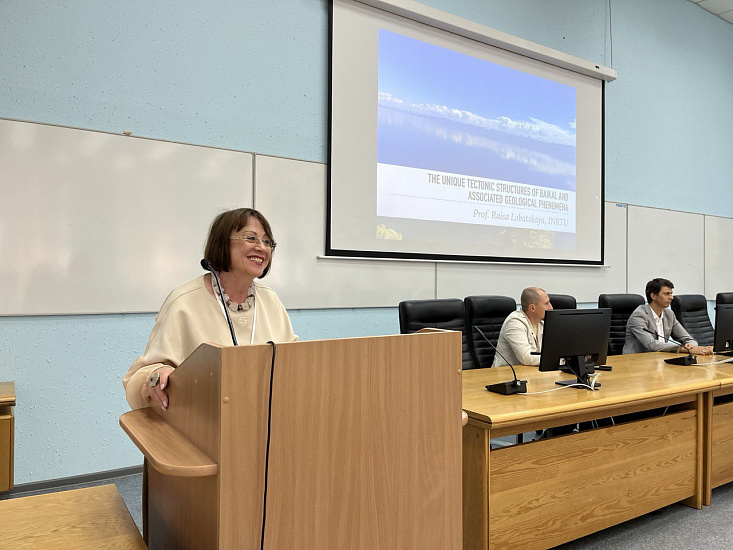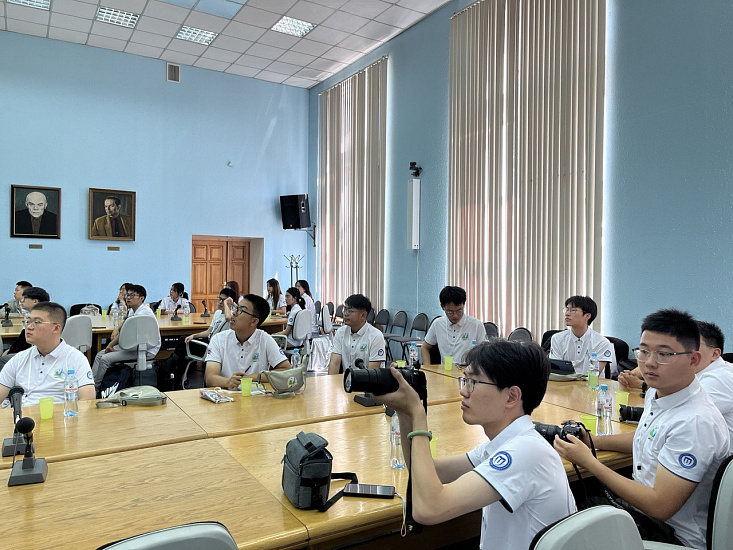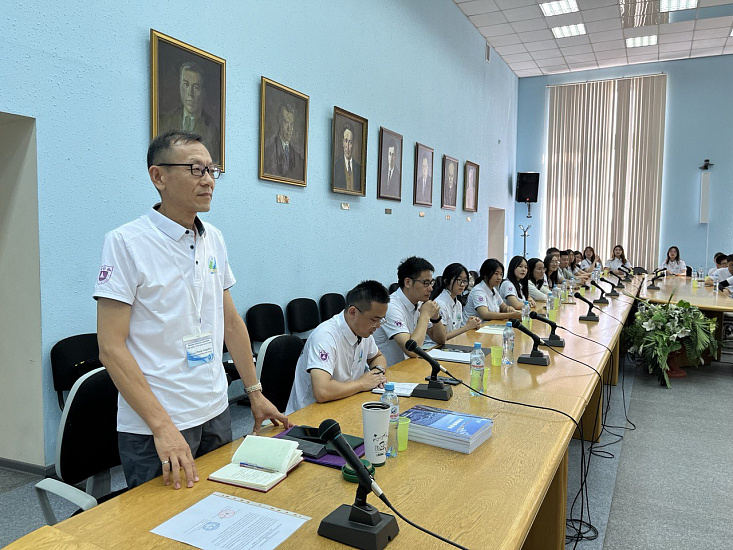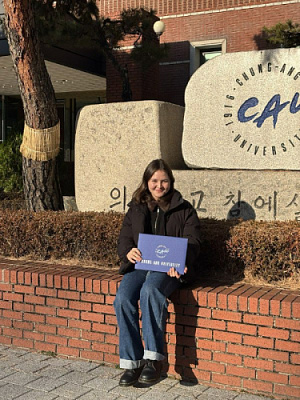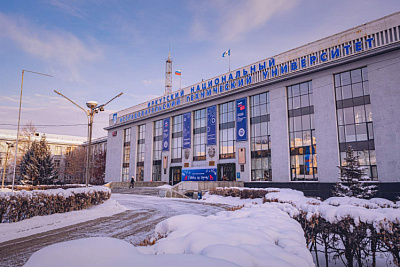The “Baikal, the Pearl of the World” Russia-China Expedition Launched at INRTU
INRTU and Nanjing University, China, continue the “Baikal, the Pearl of the World” scientific and educational project. Another expedition started on July 18. The participants are 32 Chinese students. Under the guidance of INRTU's Siberian School of Geosciences (SSG) staff they will conduct fieldwork around the Baikal rift zone.
Larisa Auzina, Head of the Hydrogeology Laboratory, hosted the expedition opening ceremony. She thanked the scientists behind the project - INRTU's Professor Raisa Lobatskaya, Doctor of Geological and Mineralogical Sciences, and Professor Zhu of Nanjing University. Larisa Auzina also expressed her gratitude to all those who helped organize this year's expedition.
The Chinese delegation was welcomed by Vice-Rector for Academic Affairs Vladimir Smirnov:
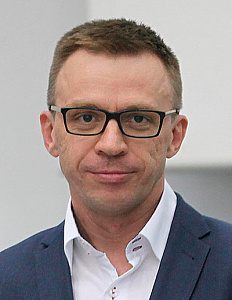
"Our friendship with Chinese universities is growing. More and more Chinese students are coming to study with us. INRTU has developed joint educational programs with a number of universities in China. We are very excited about an interesting geology project with Nanjing University. Our regions are located in unique natural areas. We have the world famous Lake Baikal. In terms of geology, Nanjing is also located in an interesting area. I hope that your stay in the Irkutsk Region not only will let you see something new and get to know our country, but also it will enrich your professional knowledge".
As noted by Alexander Kononov, Vice-Rector for Research, the SSG employees have prepared an extensive program that will give the project participants a clear idea about Lake Baikal and the geological conditions it was formed by.
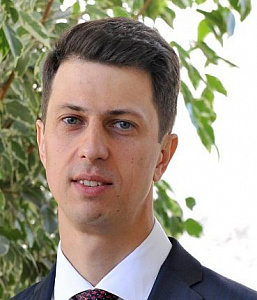
"You will see objects related to the formation of Lake Baikal, and in your heart, I am sure, it will remain forever. I hope that the most important result of the expedition will be scientific interest. This project will allow you to become real scientists. It may also inspire some of you to connect your future career with Baikal. Have a successful expedition and great impressions," said Alexander Kononov.
Alexander Parshin, the SSG Scientific Director, congratulated the future colleagues on the start of their exciting adventure. He pointed out that only a few Russian specialists are familiar with the objects that the project participants will get to see:

"In fact, you are going to live in an open-air geological museum - at the Chernorud base of practices. We offer you to make land and water expeditions to unique geological, hydrological, geomorphological objects found in the Baikal region. This is a great opportunity to broaden your scientific and professional horizons and become highly qualified specialists in the future. The magnificent Lake Baikal will inspire you and lead you to further development. I wish you good weather and bright impressions".
According to Professor Zhang Yongzhan of Nanjing University, the previous expedition took place five years ago.

"We welcome our old and new friends. Nanjing University pays great attention to this project developed by Prof. Raisa Lobatskaya and Prof. Zhu. Lake Baikal, the Pearl of Siberia, is an amazing and valuable object for research. The expedition will bring a lot of joy and positive emotions to our students who already have a fieldwork experience. The city of Nanjing is located on the lower reaches of the Yangtze River. Nanjing University boasts a good research base. As the outcome of the previous expeditions, we have published a three-language dictionary of the Lake Baikal terms. I am convinced that our cooperation will continue, and for many students Lake Baikal will be the starting point of their scientific careers".
The working scientific and educational program began with a lecture by Prof. Raisa Lobatskaya on The Unique Tectonic Structures of Lake Baikal and Related Geological Phenomena.
On the first day of the expedition the Chinese students visited the INRTU Mineralogical Museum and took a tour of Irkutsk.
On July 19 the students will go to the INRTU's Chernorud base of practices. The students - future geologists, geographers, oceanographers, biologists and geomorphologists - will work in groups. Land routes along the Baikal rift and boat trips are planned. The students will visit the Tazheran steppe to learn about the formation of the Olkhon region's lakes. The program also includes acquaintance with the neotectonic history of the Baikal rift zone.
The students will be supervised by Larisa Auzina, Head of the SSG Hydrogeology Laboratory, Konstantin Konstantinov, Head of the Geophysics Department, and Olga Kachor, Head of the Geoecology Department.
The project ends on July 30. At INRTU the expedition participants will present scientific and educational reports on the fieldwork results.
Chinese students assisted by INRTU students first visited Lake Baikal in 2001. They were future geologists from the universities of Beijing and Wuhan. Nanjing University joined the project in 2019. Then the Chinese students spent the summer field season at Lake Baikal, and the INRTU students completed a geological internship at Nanjing University in autumn, studying unique geological objects in China.
Photos by INRTU Press Service
